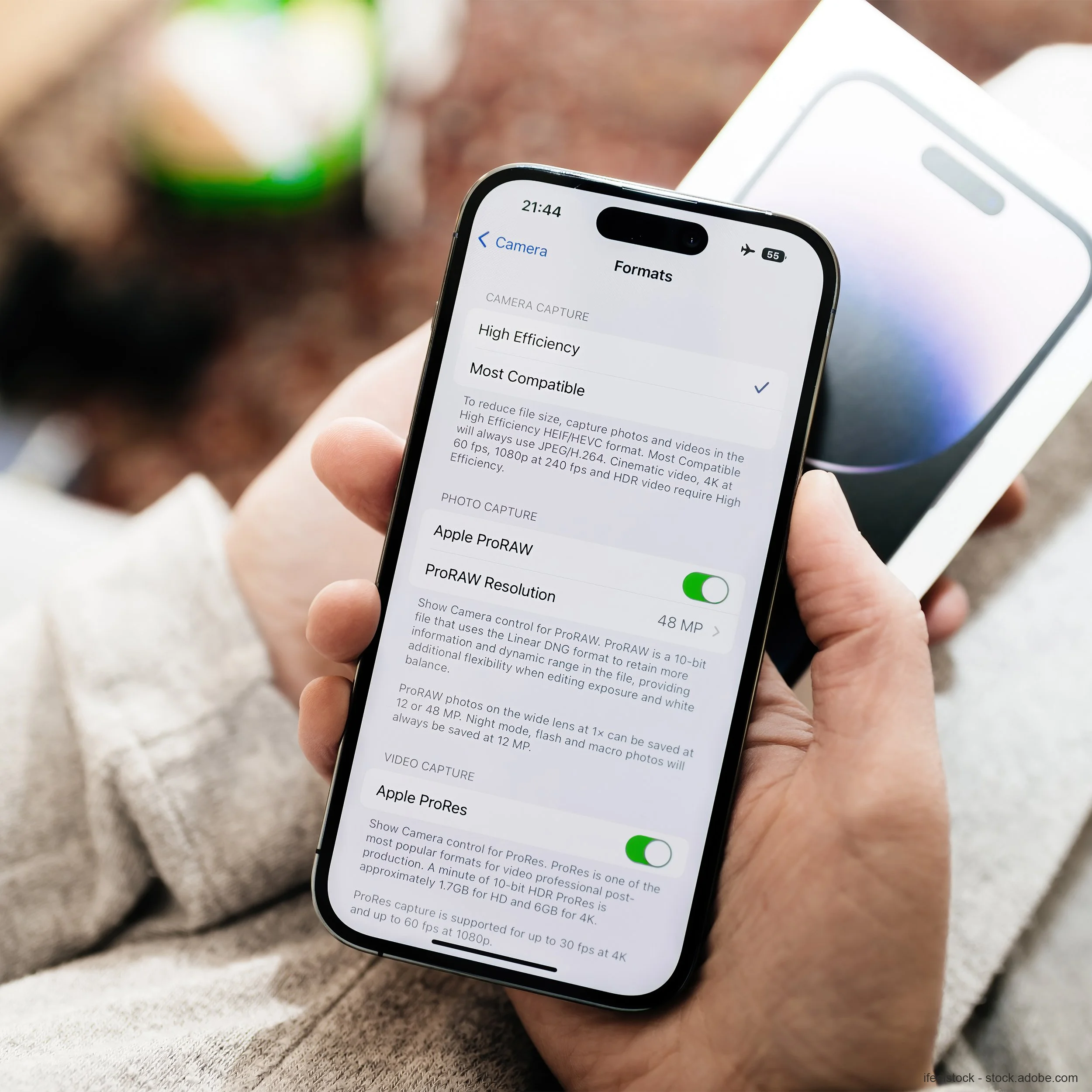Can You Professionally Retouch Smartphone Photos?
The short answer is yes. I often do this for clients when they captured a moment that would have been lost if they had to schedule a photographer to take the picture. Although the retouched smartphone shot looks beautiful, you can see a difference from a professionally taken photo. And the difference is not in the retouching but in the original image.
Since you take photos with your smartphone while holding your device in your hand, the software in your phone automatically selects settings that reduce camera shake by lowering the aperture value and thus letting more light hit the sensor. However, if a lower aperture value does not sufficiently brighten the image, your phone's software revs up the post-processing engine. Unfortunately, the harshness of the post-processing often makes the picture grainy, sometimes even leaving artifacts in the image. Depending on how you plan to use the photo, some grain in the image may be a compromise worth making to keep camera shake at bay.
Professional photographers, on the other hand, typically use a sturdy tripod when they take pictures for clients. By placing their camera on a tripod, they can reduce the shutter speed and expose the image longer, creating a brighter image with less grain. They also shoot in RAW and do the post-processing themselves to prevent the camera software from making unintentional adjustments and leaving unpleasant artifacts.
Now, back to retouching. When I retouch a photo, I use a combination of Adobe Lightroom and Adobe Photoshop. In general, Lightroom can show you results faster than Photoshop, but Photoshop lets you be more precise. So there is a trade-off here. If you are new to retouching, Lightroom is a good place to start. There is also an abundance of YouTube tutorials on the internet that you can watch to learn specific techniques.
Retouch Your Photos Like a Pro
Here are a few pointers to help you better understand professional retouching.
What is the key message in a photo? Sometimes my clients brief me on what they like about a particular picture and why they took it. At other times, I need an image to convey a message in support of a story I write. Determining this central message is a critical step in the entire retouching process. It's like setting your objective, with which all subsequent actions have to align. As soon as I understand this key message clearly, I start thinking about how I can best translate this message into the language of photography - light.
The secret of professional retouching. What words are for writers, light is for photographers. Light can accentuate parts of a scene drawing your eyes to them, while darker areas attract less attention. Light is not even. It reflects off surfaces. Reflections can be hard and pronounced, or soft and subtle, causing different emotions. The secret to professional retouching is to use light sparingly more like an artist than a machine. The next time you sit in front of Lightroom, my advice is to stay away from the global adjustment sliders. I don’t recommend to retouch a photo by moving a couple of global adjustment sliders. Instead, use the adjustment brush. Highlighting only specific objects in a scene without affecting the entire image makes a noticeable difference in articulating your photo's message.
What can you do with the adjustment brush? With the local adjustment brush, you have the same basic sliders as you have for the entire image. The main difference is that the adjustments only apply to the area you have marked with your brush. You can, for example, increase the exposure of a lamp and make it more yellow, and it looks like you have just turned it on. You can also brighten unpleasant shadows, reducing the contrast in the picture.
Don't overdo it. Your photo still needs to look natural. With these endless possibilities at your fingertips, your imagination is probably in overdrive by now. A word of caution, though. Being able to use all Lightroom features and filters does not mean you should. The best photographs are those that do not look like they have been retouched. They look stunning, of course, but still natural.
The smartphone revolution exponentially increased the number of photographs we consume. Facebook, Instagram, Pinterest, or the internet in general, feature photos en masse.
However, quantity rarely equals quality.
If you spend time and effort retouching your images or ask somebody to do it for you, your online presence may look more sophisticated and professional, which can help to differentiate yourself or your company from the competition.











